Serial Killer Deep Dive: Robert Pickton
Not all Canadians are nice.
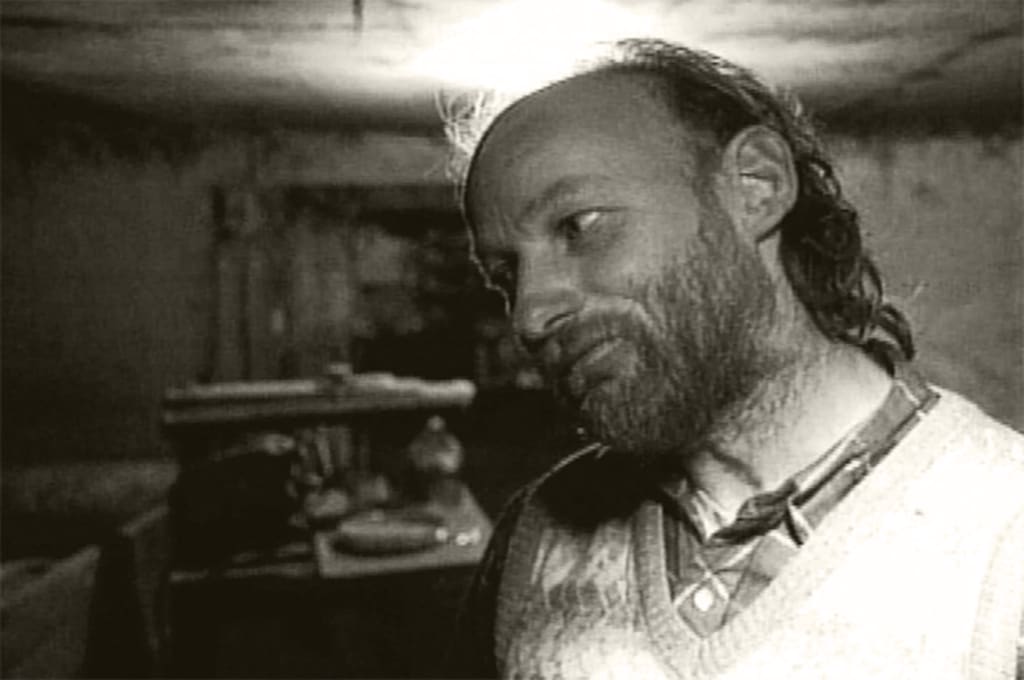
Disclaimer: this article contains graphic crime scene photos.
Imagine you're at the grocery store shopping for dinner. Deciding that you're going to make spaghetti and meatballs, you pick up a package of fresh ground pork. You get home, prepare your meal and sit down to enjoy it. You turn on the six o'clock news and begin to eat. Suddenly a public health advisory flashes on the screen. As you swallow your first meatball, you discover that you might've just eaten human flesh: Dead prostitute flesh.
Robert William "Willy" Pickton was born in 1949 in Port Coquitlam, British Columbia, a forty-five minute drive from Vancouver. He was described as a very socially awkward person who would display bizarre behaviour from time to time. His family owned a pig farm but most of it was sold off to urban developers, reducing the farm to 6.5 hectares by 1992. Robert and his brother David used their share of the proceeds received from real estate transactions to maintain a small-scale livestock operation on the farm. Over time the brothers gradually began to neglect the farm and instead registered as a non-profit charity called "Piggy’s Palace Good Times Society". They claimed it was meant to raise funds for service organizations through events such as dances and shows. However it was mainly just an excuse to throw wild parties and raves. Neighbours often complained of rowdiness, drug use and noise from the parties which sometimes hosted 2000+ people, including the infamous biker gang, Hells Angels. In 1998, the siblings were legally forbidden to throw anymore parties and the "charity" was officially shut down in 2000.
But during all this time, throughout all of the partying and all of the events, there was something much more sinister going on at the farm.
Women began to go missing. In fact, women had started to go missing from the Vancouver area in the early 80s. Many of them were prostitutes and therefore considered "low priority" to the police. Rumours of a serial killer began circulating in Downtown Eastside, one of Vancouver's oldest neighbourhoods notorious for drugs, poverty and crime. Sex workers began working in groups and recording the license plate numbers of cars that picked them up. But despite all of their efforts to keep each other safe, the disappearances continued.
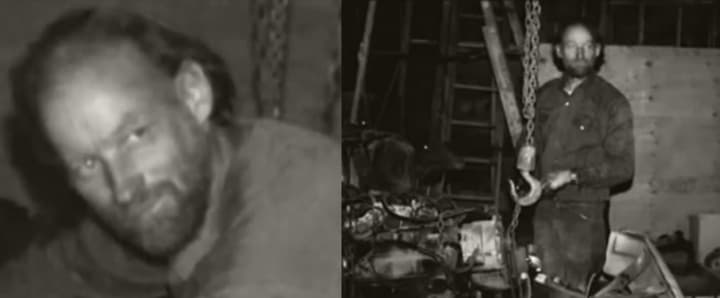
Robert at the pig farm.
It wasn't until 1997 that the first criminal charge against Robert Pickton would be made. A sex worker named Wendy Lynn Eistetter made her way to Robert's farm where an altercation later occurred. Wendy told police that Robert had handcuffed her and stabbed her several times before she was able to escape, disarm him and stab him with his own weapon. Robert claimed she was a hitchhiker who had attacked him. Police found a key in Robert's pocket that fit the handcuffs used on Wendy. He was then arrested and charged with attempted murder, assault with a weapon and forcible confinement. However, the charges were dropped in 1998 because the police said Wendy was a drug addict and not considered a competent witness.
Over the next three years, farm worker Bill Hiscox noticed that women who visited the farm eventually went missing. His first call to Crime Stoppers was in 1998, suggesting that police investigate some "sicko" named Willy who often picked up prostitutes in Vancouver and the surrounding area. He told them that Willy had bragged that he could "easily dispose of bodies" and that he had at least ten purses and women's identification in his possession. He called Crime Stoppers again a few days later to give police Robert's full name and tell them that he had a farm in Port Coquitlam. He also added that Robert might've killed Sarah, a girl known to police at the time as Sarah de Vries, one of the dozens of women who had disappeared from Downtown Eastside. Bill finished off his call by saying “Robert might be responsible for all the missing girls.”
Finally! A huge tip on a widespread disappearance case.
But it wasn't taken seriously.
When Vancouver police detective constable Lorimer Shenher learned of the tip given by Bill, he struggled to attract police resources and general attention to the case. Nobody seemed to care. They received another tip in 1999 that Robert had a freezer full of human flesh on his farm. Police interviewed him and Robert denied killing the missing women. Robert consented for the police to conduct a search of his farm, but they never did.
Why didn't the police search the farm? Why wasn't this being taken seriously? How many more women would have to turn up dead before authorities would care?
Three more years went by and women continued to go missing.
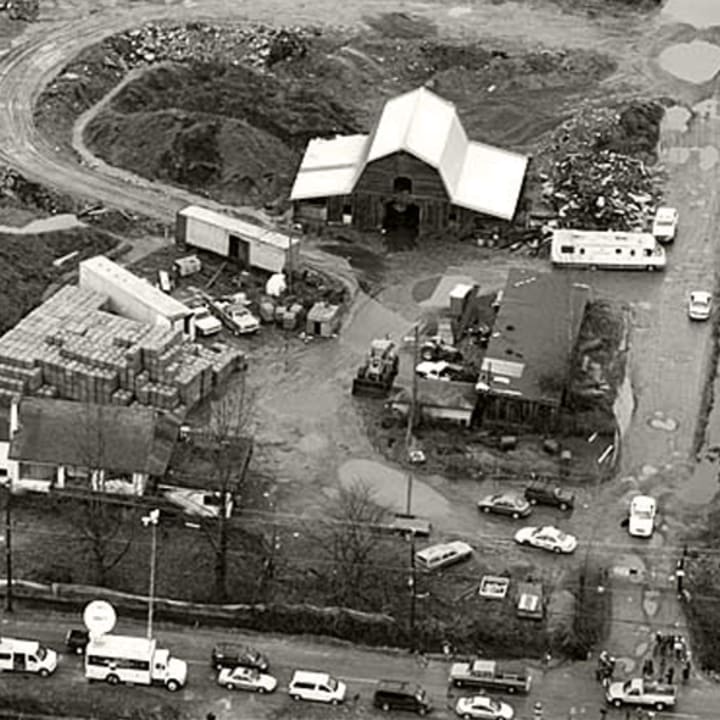
Police infiltrating the Pickton's pig farm.
It wasn't until February 5th, 2002 that police finally searched Robert's farm; not looking for bodies but instead acting on a warrant for firearm violations. In addition to a few guns, they found the personal belongings of a missing woman. Robert was taken into custody and police obtained a second court order to search the farm as part of the BC Missing Women Investigation. Robert was charged with weapons offences and released on bail but was not permitted to return to the farm while officers conducted the second search. As they continued to search the farm, they found remains of some victims, including skulls cut in half and stuffed with human hands, bloody clothing, jawbones and teeth, and DNA from 33 different women. They also found a .22 revolver with a dildo attached to its barrel, which Robert later said was meant to function as a makeshift suppressor. They found .357 Magnum rounds, two pairs of faux fur-lined handcuffs, a pair of night-vision goggles and photos of a garbage can containing human remains.
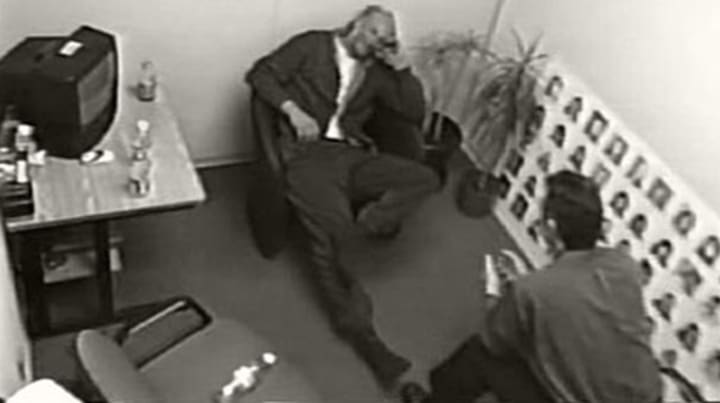
Robert being interviewed by one of the many investigators following his arrest.
On February 22nd, Robert was re-arrested and charged with two counts of murder. He was held in jail in Surrey where he shared a cell with an undercover RCMP officer. The two engaged in conversation and Robert said that he had murdered 49 women and had wanted to make it 50.
"I was gonna do one more, make it an even 50. That's why I was sloppy, I wanted one more. Make... make the big five-O."
More charges of first-degree murder came flooding in over the next few months. As police and forensic teams matched DNA found on the farm to the DNA of the missing women. Robert received a total of 27 first-degree murder charges. While he suggested to the undercover officer that he had murdered 49 women, investigators couldn't find evidence of the other Jane Doe's. Why? Because most of the bodies had already decomposed or, even more disgustingly, were fed to the pigs on the farm. In 2004 it was revealed that Robert might have ground up human flesh and mixed it in with pork which he then sold to the public. The province's health authority later issued a warning. Meanwhile the farm had become the largest crime scene in Canadian history as the total cost of the investigation was estimated around $70 million.
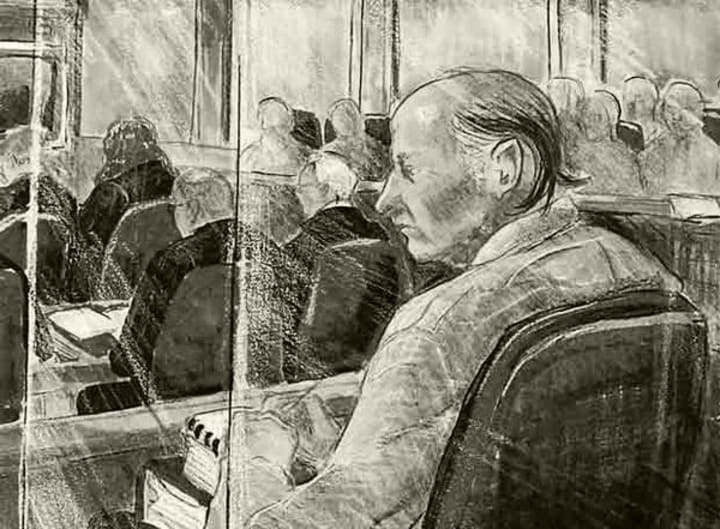
Drawing of Robert in court.
It wasn't until January 30th, 2006 that Robert's trial finally began. He pled not guilty to the 27 charges of first-degree murder. Most trial details were kept secret from the public due to a publication ban in the province. On August 9th, Justice James Williams split the charges into one group of six counts and another group of 20 counts. The trial proceeded with the six counts while the other 20 would be addressed in a separate trail. Because of the publication ban, full details of the judge's decision to split the counts are not publicly available but he explained that trying all 26 charges at once would be too burdensome for the jury.
On January 22nd 2007, Robert faced the six first-degree murder charges. The media ban had been lifted and for the first time Canadians heard the gruesome details of what had been found during the investigation. A month later, the following information was presented to the court:
- testimonials from lab staff claiming 80 unidentified DNA profiles had been found on evidence
- items found in Robert's trailer including the .22 revolver with a dildo over the barrel, boxes of .357 Magnum ammunition, night vision goggles, faux-fur handcuffs, a syringe with blue liquid inside and photos of the contents inside Robert's garbage cans which contained human remains
- a videotape of Robert's friend Scott Chubb saying that Robert told him a good way to kill a female heroin addict
- a videotape of an associate named Andrew Bellwood saying that Robert mentioned killing prostitutes by handcuffing and strangling them, then feeding them to the pigs
Later that year, a juror was accused of having made up her mind already that Robert was innocent. The trial judge questioned her and she denied having ever said anything about making a decision. It was ruled that she would be allowed to remain on the jury since there was no way to prove that she had in fact made the statements. In December, Justice Williams suspended jury deliberations after he discovered an error in his charge to the jury.
On December 9th, the jury returned a verdict that Robert was not guilty on six counts of first-degree murder but was guilty on counts of second-degree murder. Since there is no death penalty in Canada, Robert received a life sentence with no possibility of parole for a period between 10 and 25 years. However, after reading 18 victim impact statements, Justice Williams sentenced Robert to life with no possibility of parole for 25 years - the maximum sentence for second-degree murder and also the equivalent of a first-degree murder conviction.
Over the next few years there were many attempts from the attorney general and the public to change Robert's conviction, as many were surprised he wasn't found guilty of first-degree murder. Even Robert's lawyers requested a new trial for the six counts of second-degree murder but the charges stayed. B.C. Crown spokesman Neil MacKenzie announced that the prosecution of the other 20 murder charges would likely be discontinued. This announcement received varied reactions. Many families were disappointed that Robert would never be convicted while others were relieved that the gruesome details of the murders would be spared.
On August 4, 2010, Crown prosecutors stayed the balance of the pending murder charges against Robert, ending all chances of any further trials.
A few days later, various media outlets released the transcript of the conversation held between Robert and the undercover RCMP officer. Unfortunately, sections of the document had not censored the officer's real name. The uncensored document was publicly available for an hour before being pulled and re-edited. The consequences of this mistake are unknown, many fearing for the safety of the officer, but as of today there hasn't been any repercussions.
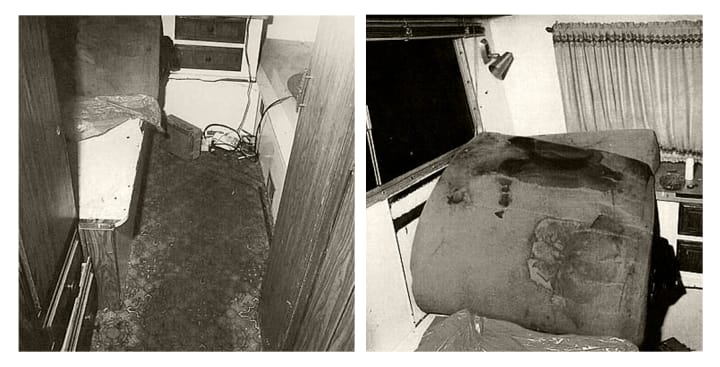
Photos of inside of Robert's trailer. The blood of Mona Wilson was found on the floor and on a mattress.
As for the families of the deceased, they're left with an endless stream of questions. Why did Robert do it? Why didn't the police take the case more seriously in the beginning? Why was he never charged with the other counts of murder?
Let's start off with the question of why Robert did it. Not much is known about his upbringing so it's hard to look at this from a psychological and sociological standpoint. Canadian author Stevie Cameron followed the murder case and ended up publishing two books offering insight as to why Robert might've done the things he did. In an article for the Toronto Star, she said that Robert's upbringing had been brutal and difficult. His father wasn't involved in raising the children, leaving his mother Louise to care for them as well as the farm. Apparently she was quite eccentric like Robert and very tough. Was this enough to turn Robert into a murderous psychopath?
Secondly, why didn't the police take the case seriously in the beginning?
As mentioned before, crimes involving sex workers are often seen as "low priority" in the eyes of the law but wouldn't a case of multiple women disappearing, regardless of their profession, set off some red flags? Did police think that everyone else was safe just because Robert was targeting prostitutes?
And then finally, why did it take so long for Robert to be arrested? Aside from authorities not jumping on the case right away, what was the reason? Why did they wait three years after receiving tips to search Robert's farm? In 2010, the Vancouver Police Department issued a statement saying they had been communicating privately with the provincial government and that it's believed that a public inquiry would be necessary for an impartial examination of why it took so long for Robert to be arrested.
It may never be known Robert's true motive for the murders but at least the public can rest assured that he's behind bars for life; and for the families that are still grieving, hopefully this can give them even the slightest bit of closure.
Source Material
https://en.wikipedia.org/wiki/Robert_Pickton#Murders
http://criminalminds.wikia.com/wiki/Robert_Pickton
http://www.thecanadianencyclopedia.ca/en/article/robert-pickton-case/
http://www.macleans.ca/news/canada/how-a-serial-killer-slipped-away/
https://www.thestar.com/news/2007/06/17/picktons_mother_was_a_key_influence.html
About the Creator
Jenny Reed
Twenty-something based in Toronto. Lover of horror, true crime & pugs.

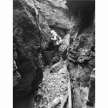
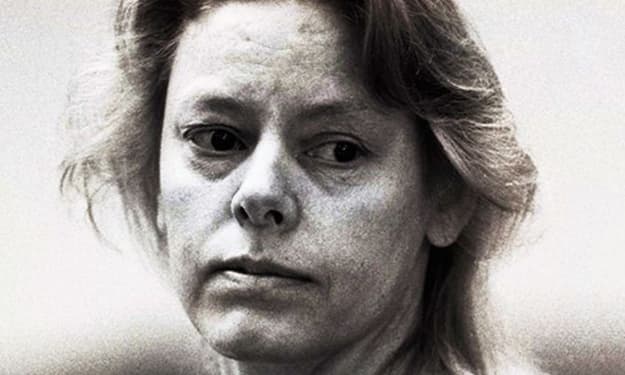



Comments
There are no comments for this story
Be the first to respond and start the conversation.